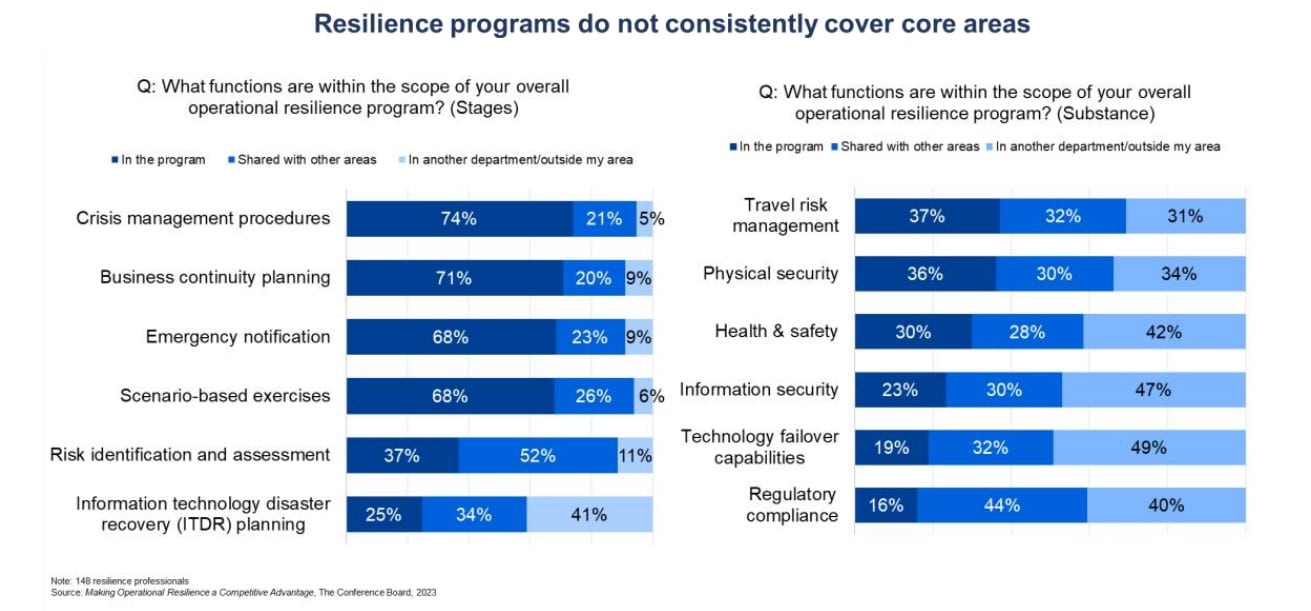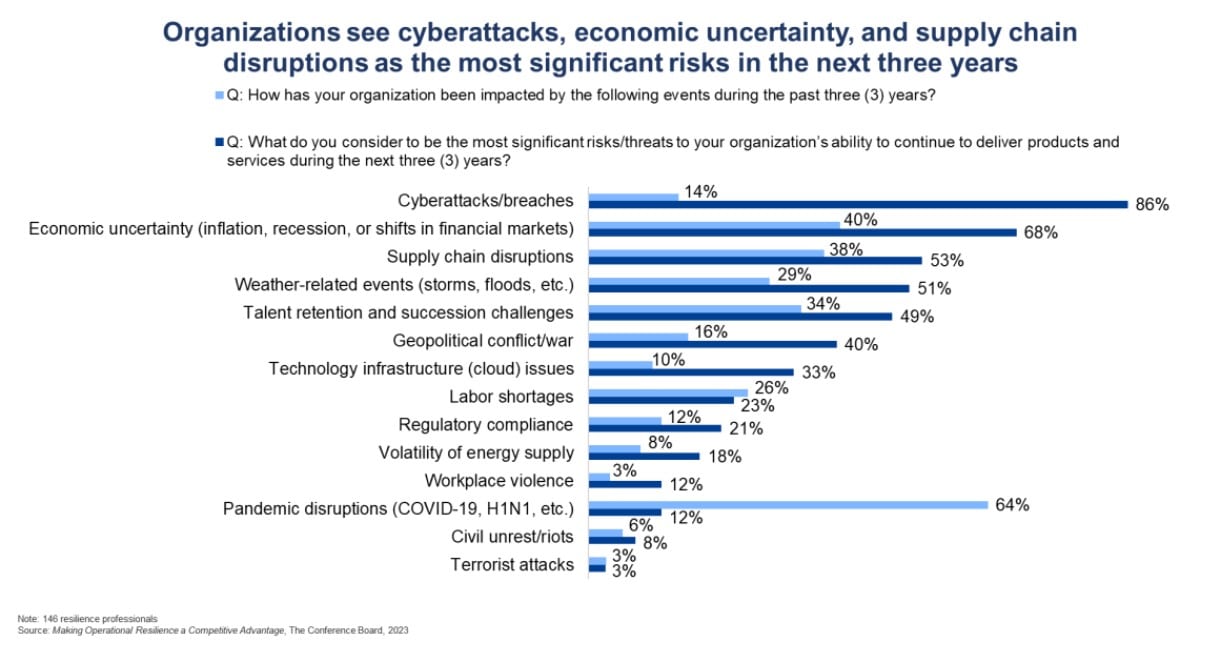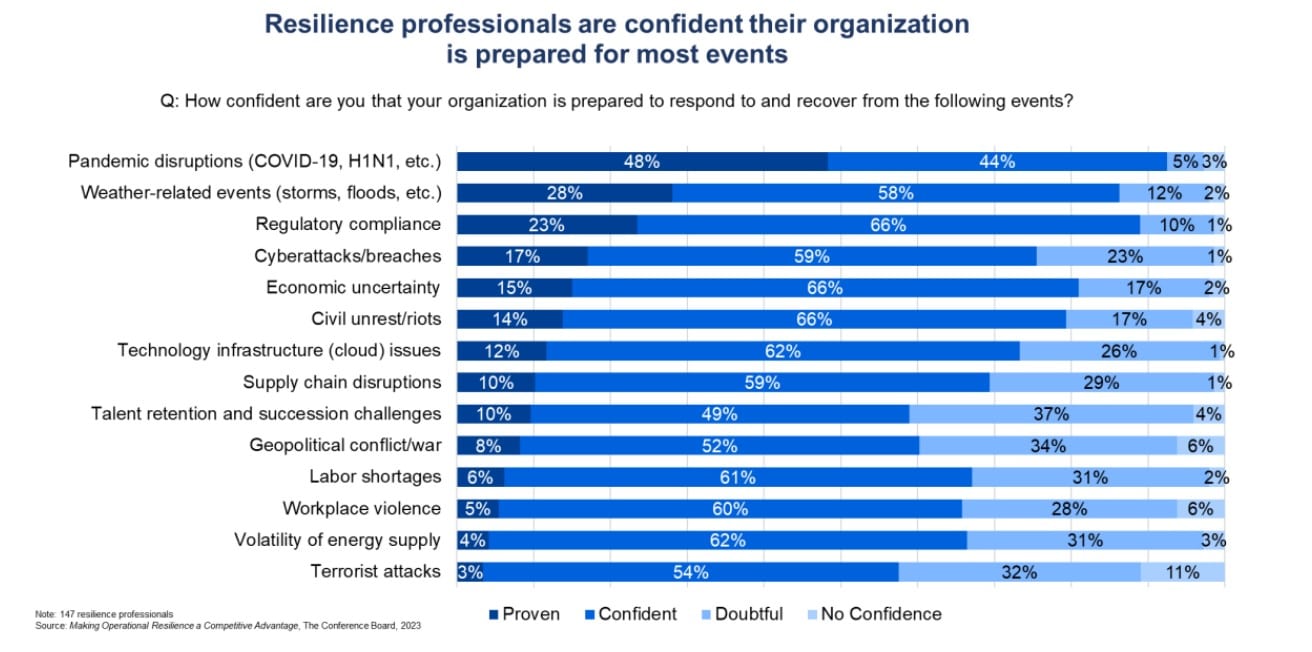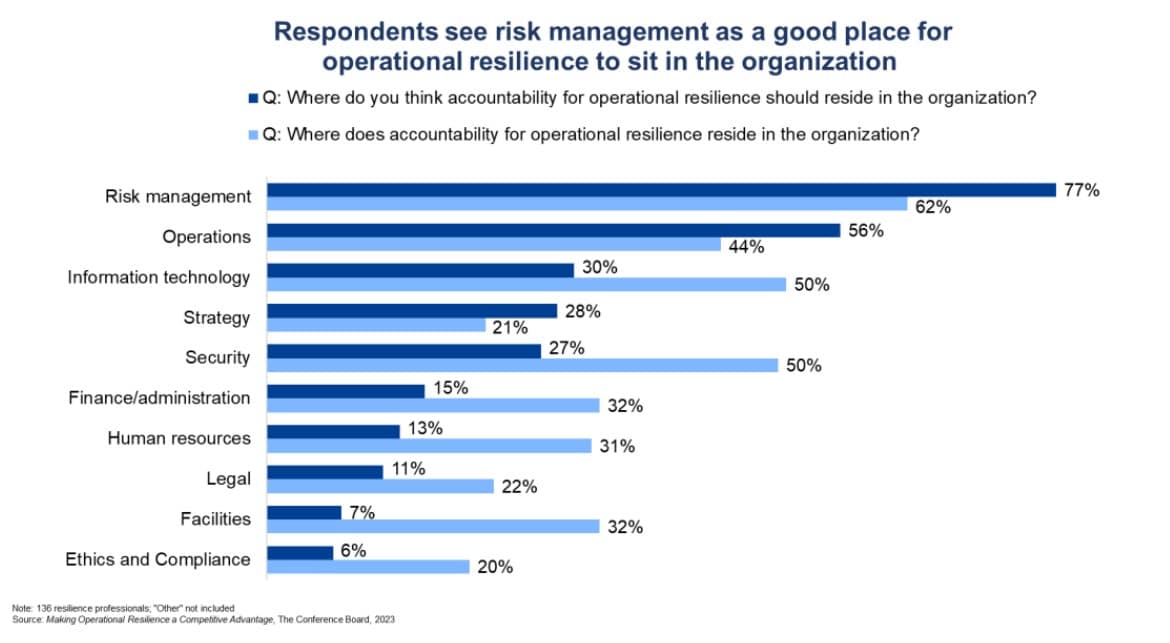The state of business stability has rarely been so vulnerable—today’s geopolitical turmoil, shaky economy, intensifying natural disasters, cybersecurity breaches, supply chain disruptions, and other challenges are testing the resiliency of companies like never before. New research from The Conference Board finds that CEOs are far less confident in their company’s ability to prepare for, respond to, and recover from crises, compared to executives who have direct responsibility for crisis management and business continuity—and recommends making these preparations a key strategic objective.
The firm’s new report, Making Operational Resilience a Competitive Advantage, developed in collaboration with business continuity firm Agility Recovery and its software division Preparis, recommends that CEOs take this opportunity to ensure the company has a consistent view of the risks it faces and its state of resilience, and encourages boards and CEOs to view resilience as strategically important—to think of it as a competitive advantage, not just a cost center—and as companies focus on sustainability in the long run, they first need to be sure they are resilient in the near term.

The researchers also stress that operational resilience is becoming increasingly important because the risk environment is evolving, with 90 percent of resilience professionals—those involved in crisis management, business continuity, and related areas—expecting the threats to increase over the next three years.
“CEOs should close the gap between their own and their resilience teams’ understanding of their organization’s preparedness. To do so, management needs to reach a common understanding of the full impact that key risks can have on the organization, the programs in place to address those risks, and the quantifiable financial impact that investing in operational resilience can have,” said Paul Washington, executive director of The Conference Board ESG Center, in a news release.

Operational resilience is becoming increasingly important and complex
- 90 percent of resilience professionals in our survey expect the threats to their organization to increase over the next three years—especially for risks related to cyberattacks, the economy, supply chain, climate change, and talent retention, which cut across corporate functions.
- With risks becoming increasingly interconnected, companies need to adopt a cross-functional approach to managing operational resilience. For example, both technological attacks and weather events can disrupt supply chains, which in turn can have a significant impact on the economy.
Companies may be less prepared to respond to crises because of the impact of remote work, heightening the need to focus on the human element of operational resilience
- Resilience professionals are concerned about several risks posed by remote work, including burnout (cited by 74 percent), along with diminished employee engagement (81 percent) and reduced collaboration (79 percent). These factors and others can reduce companies’ ability to respond quickly and creatively to disruptions.
“While most companies have expanded their investments in operational resilience in recent years and expect to increase them further in the years ahead, those investments should go beyond buildings, equipment, and technology,” said Jon Bahl, CEO of Agility Recovery and Preparis, in the release. “It is vital that employees at all levels of the organization understand what operational resilience is, know what their role is in advancing it, and be resilient themselves.”
As risks are rising, companies should revisit where responsibility for operational resilience sits within the organization
- Half of respondents say operational resilience often sits with information technology or physical security, which focus on components of operational resilience.
- Most respondents believe responsibility for resilience should sit with a part of the organization that has an enterprise-wide remit and is closely aligned with the business, such as risk management (77 percent) or operations (56 percent).

“Nearly half of the companies say that responsibility for resilience sits three to four levels below the CEO. However, it’s important that the resilience leader sits high enough in the organization to effectively coordinate and draw upon the relevant functional expertise and ensure alignment with the business strategy,” said Tim Mathews, executive director of Enterprise Resiliency at Educational Testing Service and Program Director of The Conference Board’s Enterprise Resilience and Crisis Leadership Council, in the release.
Resilience and sustainability are complementary disciplines and can learn from each other
- 43 percent of firms say their resilience and sustainability strategies are only “somewhat” aligned.
- Companies have an opportunity to bring these areas into greater alignment. Many of the environmental and social risks that concern resilience professionals are also the focus of sustainability programs.
- Resilience professionals can adapt and apply many of the organizational, programmatic, and reporting practices from sustainability while avoiding some of the pitfalls associated with sustainability initiatives, such as increased politicization and regulation.

Download the full report here.
These findings come from two sources: a survey of 147 resilience professionals, and insights provided at a roundtable that brought together 85 corporate leaders.








